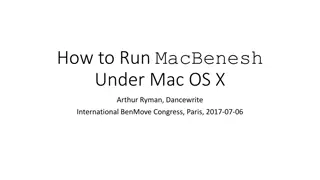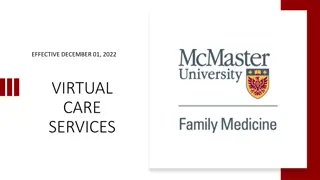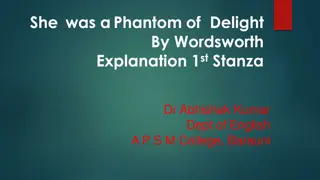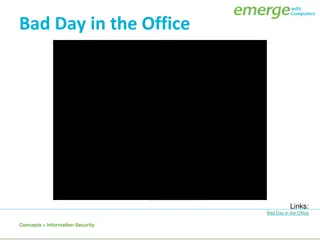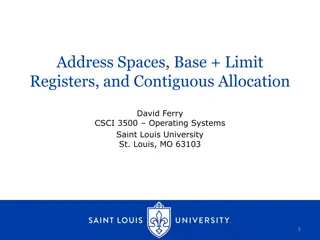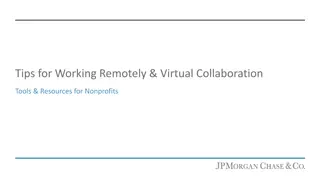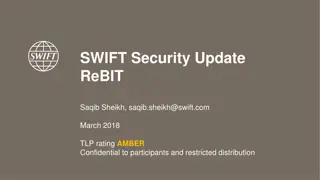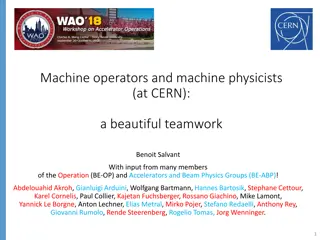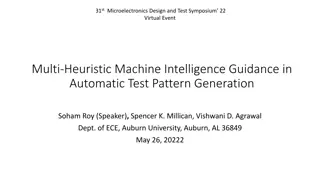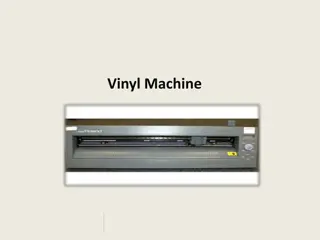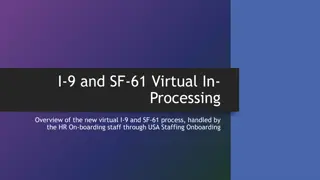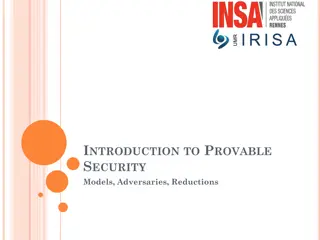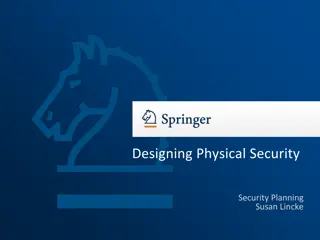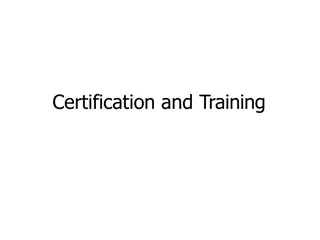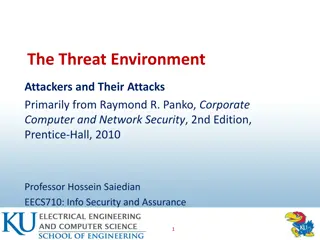Enhancing Virtual Machine Security with Apparition and Shade
Explore how Ethan Johnson and team at the University of Rochester collaborate to secure guest virtual machines in Apparition. Learn about compiler-based VMs, protecting applications from the OS, side-channel protections, and the introduction of Shade for hardware virtualization support in Apparition.
Download Presentation

Please find below an Image/Link to download the presentation.
The content on the website is provided AS IS for your information and personal use only. It may not be sold, licensed, or shared on other websites without obtaining consent from the author. Download presentation by click this link. If you encounter any issues during the download, it is possible that the publisher has removed the file from their server.
E N D
Presentation Transcript
Secure Guest Virtual Machine Support in Apparition Ethan Johnson Ethan Johnson Department of Computer Science University of Rochester In collaboration with Komail Dharsee and John Criswell
Two kinds of VMs Compiler Compiler- -based VM based VM Restricts expressivity of architecture through virtual instruction set Guest VM Guest VM A simulated full system Managed by a hypervisor Enforces policy through instrumentation and run-time checks Examples: CLR, Examples: CLR, Secure Virtual Architecture Secure Virtual Architecture (Criswell et al., SOSP 07) Runs its own OS, apps independently VMX supports these VMX supports these 2
Compiler-based VMs: Secure Virtual Architecture Virtual ISA for secure low-level software OS kernel in C/C++ compiles to extension of LLVM IR Special virtual instructions replace kernel assembly code 3
Protecting applications from the OS Compiler-based VM can enforce many policies Virtual Ghost lets user-space apps hide memory from kernel (Criswell et al., ASPLOS 14) Virtual Ghost Performance overhead only on kernel mode, not user mode Protected by Software Fault Isolation (SFI) Ghost Memory Kernel Memory User Memory 264-1 0 4
Side-channel protections Apparition added side-channel protections to Virtual Ghost (Dong et al., Usenix Security 18) Prevents kernel, other apps from attacking ghost memory via: Last-level-cache side channels Page-fault side channels Apparition 5
The other kind of VMs, in Apparition Want to run hypervisors under Apparition Software Software but VMX isn t part of the V-ISA V V- -ISA ISA OK, so just extend the V-ISA. How hard can it be? Native ISA Native ISA 6
Introducing Shade Adds hardware virtualization support to Apparition Preserves protections for ghost memory on the host Mitigates side-channel attacks by guests and compromised kernel/hypervisor 7
Key challenges we address Control flow integrity across VM entry/exit Hypervisor manages EPT but must not access ghost memory Over-powered guest could allow OS/hypervisor to escape Shade Side-channel mitigations 9
Control flow integrity on VM entry/exit VMX allows hypervisor to set arbitrary host state on exit including RIP and RSP, processor mode, segment registers Easy for hypervisor to corrupt CFI, defeat enforcement Hijacked Control Flow Hijacked Control Flow Normal Control Flow Normal Control Flow Host Host Guest Guest VMLAUNCH VMLAUNCH Skips over SFI, CFI checks 10
Control flow integrity on VM entry/exit Shade must take control of VM entry/exit Single virtual instruction for running a guest Function call semantics State saved/loaded from protected memory VMCS lives in ghost memory Virtual instructions for reading and writing Checks on values written Virtual instructions to access saved/loaded guest registers 11
Virtual instructions Allocate/free VMCS Load/unload VMCS onto processor Get/set guest registers managed by Shade Read/write VMCS fields Run VM guest 12
Protecting ghost memory Hypervisor must be able to add/remove EPT mappings But EPT could map protected memory into a guest EPT Guest VM Guest VM Hypervisor Host OS 13
Protecting ghost memory Similar problem exists for host OS page table config Page tables stored in ghost memory Virtual instructions for MMU config Shade tracks metadata on physical frame usage Checks prevent insecure EPT mappings Ghost memory Host page-table pages (regular + extended) 14
Virtual instructions for EPT Declare/undeclare PTP Update mapping Load root EPT pointer 15
Preventing over-powered guests VMX allows guests to run native privileged code Not normally permitted in an SVA-based system No opportunity to add instrumentation Guest effects on privileged state must be contained to guest Nothing host kernel not allowed to do should persist after VM exit 16
Preventing over-powered guests Some privileged state virtualized by hardware CR3 with extended paging Control registers saved/loaded atomically on entry/exit Other privileged state must be managed by hypervisor Kernel MPX registers used by Shade for SFI Shade must handle save/load during entry/exit Unused features can still be a threat New processor features, MSRs Shade checks VMCS writes to enforce safe defaults (VM exit) 17
Side-channel attacks Cache partitioning with Cache Allocation Technology (CAT) Host kernel Shade VM Ghosting apps L3 Cache Partitions L3 Cache Partitions Host Kernel + Guest VMs Must switch partition on VM entry/exit VMs run in kernel/hypervisor partition Possible to give each VM its own partition Shade VM Ghosting App Ghosting App Ghosting App Ghosting App VMCS checks prevent guest access to CAT MSRs 18
Benchmarks Extended Apparition prototype FreeBSD 9.0 kernel ported to V-ISA LLVM passes for SFI, CFI unmodified LMBench kernel latency benchmarks Verify no new impact on host applications over Apparition Hypervisor microbenchmarks Overheads of virtual instructions over native VMX operations Hypothesis: hypervisor latency dominated by other factors 20
Host kernel benchmarks Kernel execution only; lower overhead for applications No new overheads over Apparition 21
Host kernel benchmarks - outliers Only affect ghosting applications No new overheads over Apparition Due to side-channel protections Pre-allocating ghost memory affects fork() Cache partitioning 22
Hypervisor microbenchmarks VMCS write Overheads should not noticeably affect hypervisor performance VMCS read VM entry/exit Create/destroy VM 0 1 2 3 4 5 6 7 Execution Time ( s) Baseline (unsafe VMX in Apparition) Shade 23
Future work Port full commodity hypervisor FreeBSD s bhyve VirtualBox Protect guests from malicious hypervisor Mitigate cloud compromise scenarios VM exit handling, device virtualization pose challenges Prevent exploitation of hardware bugs Processor bugs in VMX implementations 24
Summary Using VMX in existing Apparition system would compromise security We extend V-ISA to expose VMX in a clean way Minimal impact on hypervisor performance 25



